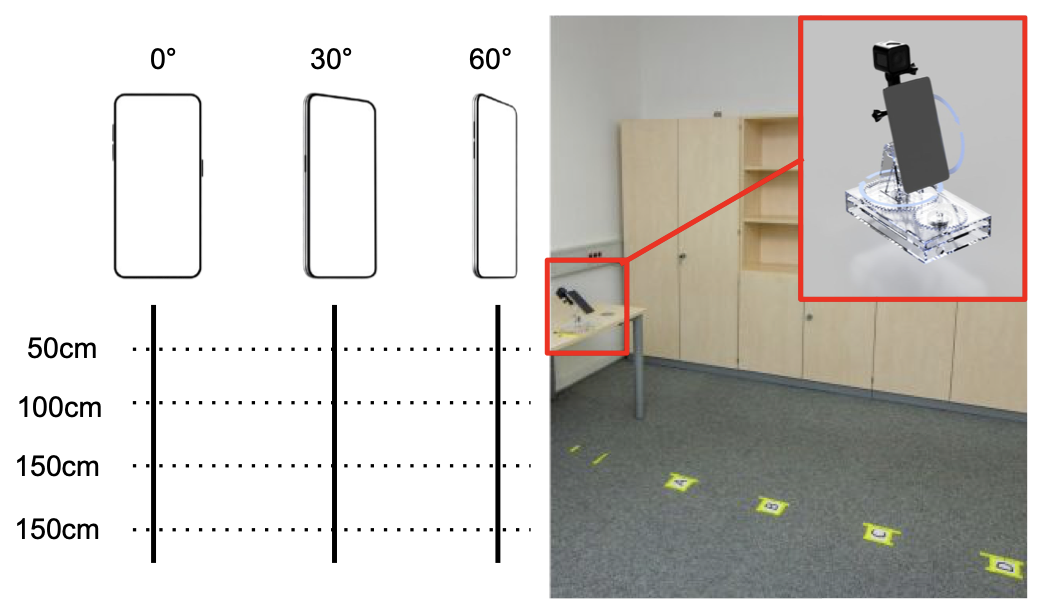PrivacyScout: Assessing Vulnerability to Shoulder Surfing on Mobile Devices
Mihai Bâce, Alia Saad, Mohamed Khamis, Stefan Schneegass, Andreas Bulling
Proc. on Privacy Enhancing Technologies (PETs), pp. 650–669, 2022.

Abstract
One approach to mitigate shoulder surfing attacks on mobile devices is to detect the presence of a bystander using the phone’s front-facing camera. However, a person’s face in the camera’s field of view does not always indicate an attack. To overcome this limitation, in a novel data collection study (N=16), we analysed the influence of three viewing angles and four distances on the success of shoulder surfing attacks. In contrast to prior works that mainly focused on user authentication, we investigated three common types of content susceptible to shoulder surfing: text, photos, and PIN authentications. We show that the vulnerability of text and photos depends on the observer’s location relative to the device, while PIN authentications are vulnerable independent of the observation location. We then present PrivacyScout - a novel method that predicts the shoulder-surfing risk based on visual features extracted from the observer’s face as captured by the front-facing camera. Finally, evaluations from our data collection study demonstrate our method’s feasibility to assess the risk of a shoulder surfing attack more accurately.Links
doi: 10.56553/popets-2022-0090
Paper: bace22_pets.pdf
BibTeX
@inproceedings{bace22_pets,
title = {PrivacyScout: Assessing Vulnerability to Shoulder Surfing on Mobile Devices},
author = {B{\^a}ce, Mihai and Saad, Alia and Khamis, Mohamed and Schneegass, Stefan and Bulling, Andreas},
year = {2022},
booktitle = {Proc. on Privacy Enhancing Technologies (PETs)},
doi = {10.56553/popets-2022-0090},
pages = {650--669},
issue = {3}
}

